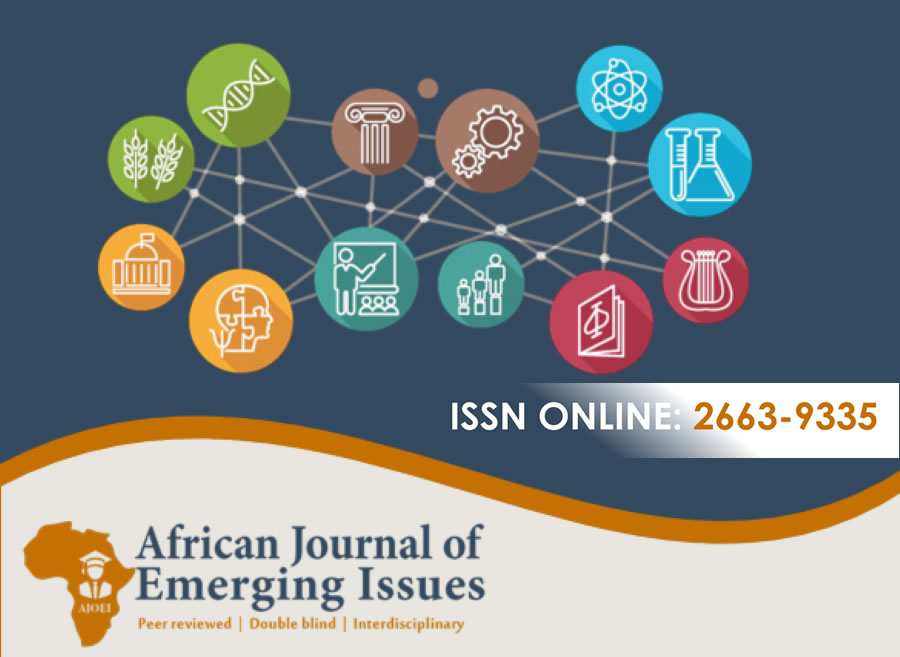MOBILE BANKING AND FINANCIAL PERFORMANCE OF COMMERCIAL BANKS IN KENYA
Abstract
Purpose of the study: This study aimed to delve into the nexus between the financial performance of Kenyan commercial banks and the advent of mobile banking. The research sought to elucidate the mobile banking strategies employed by commercial banks, assess their current financial status, and discern the influence of mobile banking on their financial outcomes.
Statement of the problem: Mobile banking has fundamentally reshaped the financial landscape in Kenya, catalyzing financial inclusion and fundamentally altering the dynamics of financial access and management. Amidst the swift digitalization of financial services, mobile banking stands out as a pivotal force in the banking sector. However, lingering concerns persist regarding its potential impacts on the financial performance of commercial banks.
Methodology: The study was literature-based, and thus a desktop research design was employed.
Findings: The study found that mobile banking has a significant impact on increasing the efficiency, profitability, and competitiveness of commercial banks in Kenya. However, major challenges, such as regulatory constraints, security concerns, and technological limitations, create risks that make it difficult for commercial banks to smoothly integrate and effectively use mobile banking platforms.
Conclusion: The study concludes that mobile banking plays a crucial role in enhancing the financial performance of commercial banks in Kenya, despite the presence of various challenges that need to be addressed through collaborative efforts among stakeholders.
Recommendations: The study recommends that stakeholders in the mobile banking ecosystem collaborate to create a conducive environment for innovation and growth by strengthening regulatory frameworks, investing in digital infrastructure, and promoting financial literacy. Furthermore, it suggests that education and research institutions conduct further research to explore the long-term effects of mobile banking on financial inclusion, economic growth, and social advancement in Kenya.
Keywords: Mobile banking, financial performance, Commercial Banks, Kenya
References
Davis, F. D. (1989). Perceived usefulness, perceived ease of use, and user acceptance of information technology. MIS Quarterly, 13(3), 319-340.
Kamau, P., & Kihara, E. (2019). Determinants of mobile banking adoption in Kenya: A structural equation modeling approach. Journal of Banking and Finance Dynamics, 7(2), 56-68.
Kamau, P., & Kihara, E. (2020). The impact of mobile banking on the financial performance of commercial banks in Kenya. International Journal of Economics, Commerce and Management, 8(9), 87-101.
Kiptui, R., & Kangogo, J. (2021). Mobile banking and financial performance of commercial banks in Kenya: A comparative analysis. Journal of Finance and Investment Analysis, 9(3), 54-68.
Mwangi, W., & Odongo, J. (2020). Mobile banking adoption and financial performance of commercial banks in Kenya: A review of literature. Journal of African Finance and Economic Devel\opment, 2(1), 23-37.
Mwenda, J., & Munyoki, J. (2018). Mobile banking and financial performance of commercial banks in Kenya. International Journal of Economics, Commerce and Management, 6(8), 184-200.
Mwenda, J., & Munyoki, J. (2020). The impact of mobile banking on the return on assets of commercial banks in Kenya. International Journal of Economics, Commerce and Management, 8(6), 120-135.
Ndung’u, N. (2019). The role of mobile banking in enhancing financial performance: A case of commercial banks in Kenya. Journal of Finance and Investment Analysis, 8(3), 95-110.
Ngugi, P., et al. (2017). The impact of mobile banking on the financial performance of commercial banks in Kenya. Journal of Finance and Investment Analysis, 6(4), 78-93.
Ngugi, P., et al. (2019). Understanding the drivers of mobile banking adoption: A conceptual framework. Journal of Banking and Finance Dynamics, 6(4), 112-125.
Scott, W. R. (1995). Institutions and organizations: Ideas and interests. Sage Publications.
Straub, D., et al. (2004). Understanding information technology usage: A test of competing models. Information Systems Research, 15(2), 125-143.
Venkatesh, V., & Davis, F. D. (2000). A theoretical extension of the technology acceptance model: Four longitudinal field studies. Management Science, 46(2), 186-204.
Venkatesh, V., et al. (2003). User acceptance of information technology: Toward a unified view. MIS Quarterly, 27(3), 425-478.





